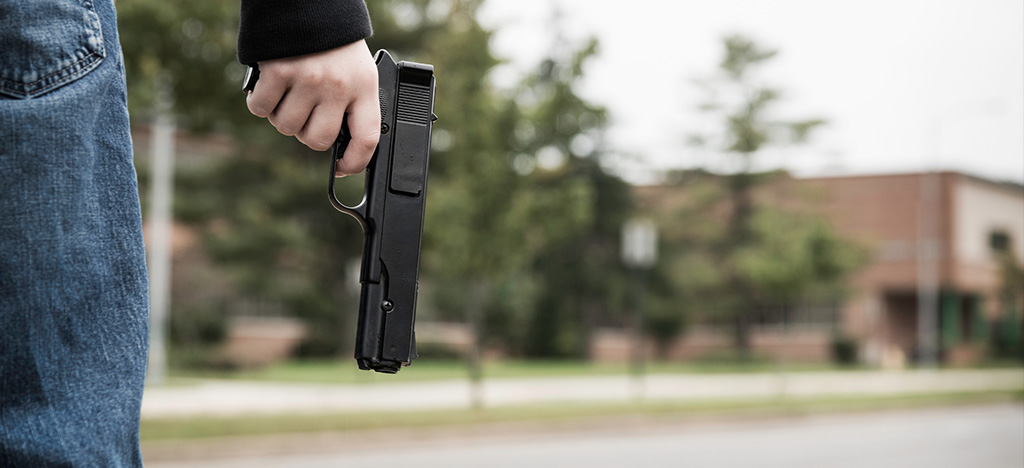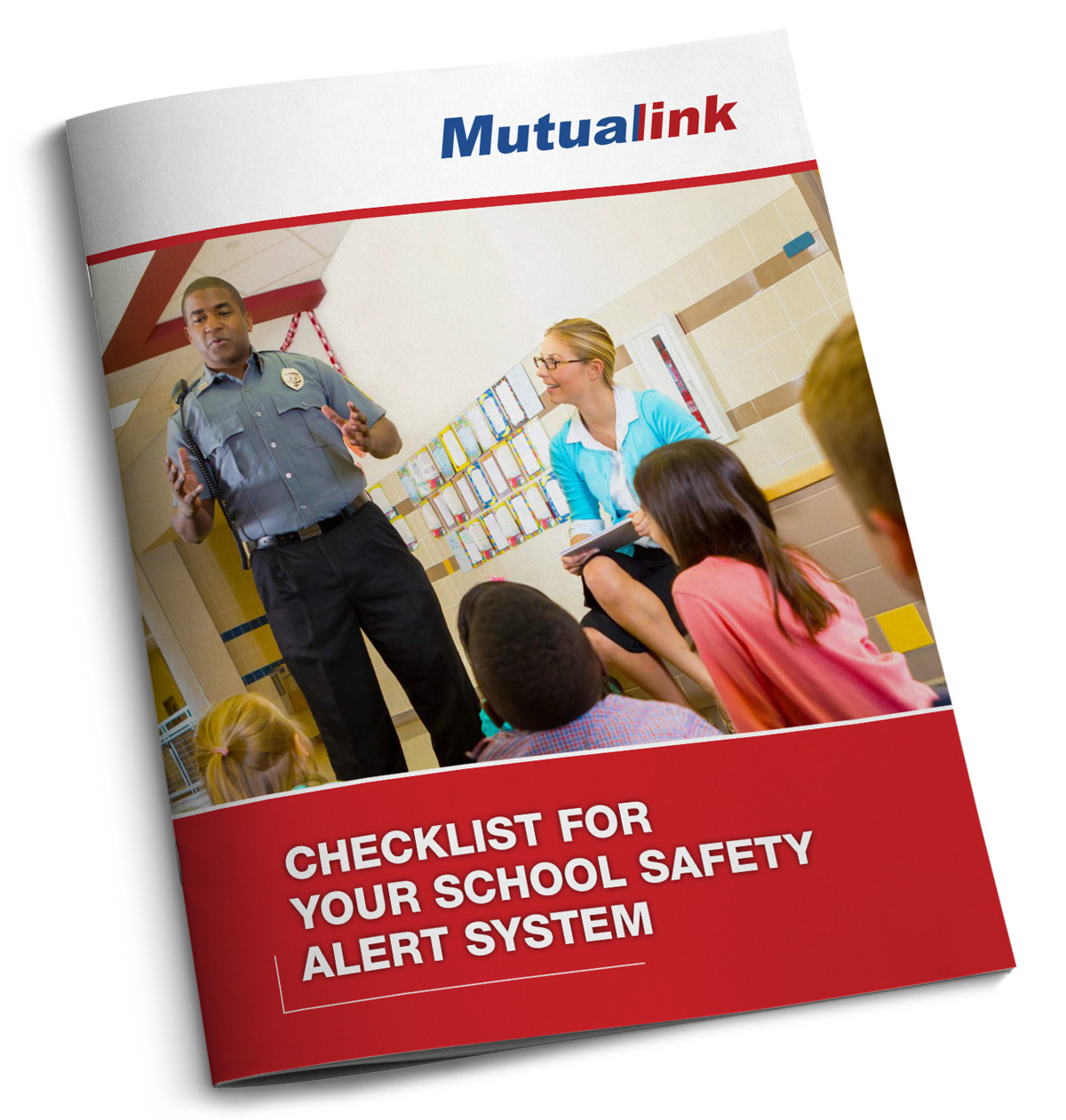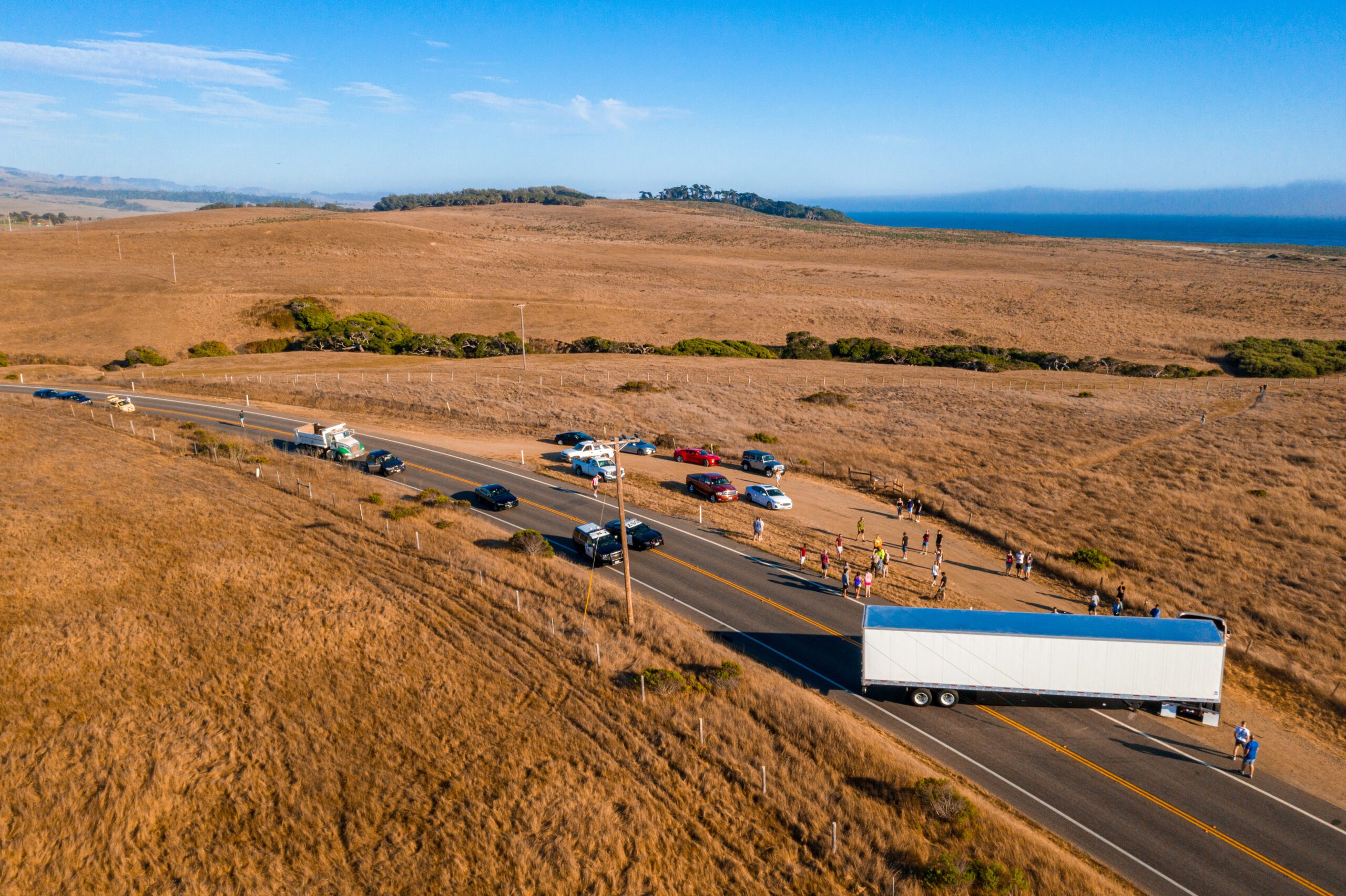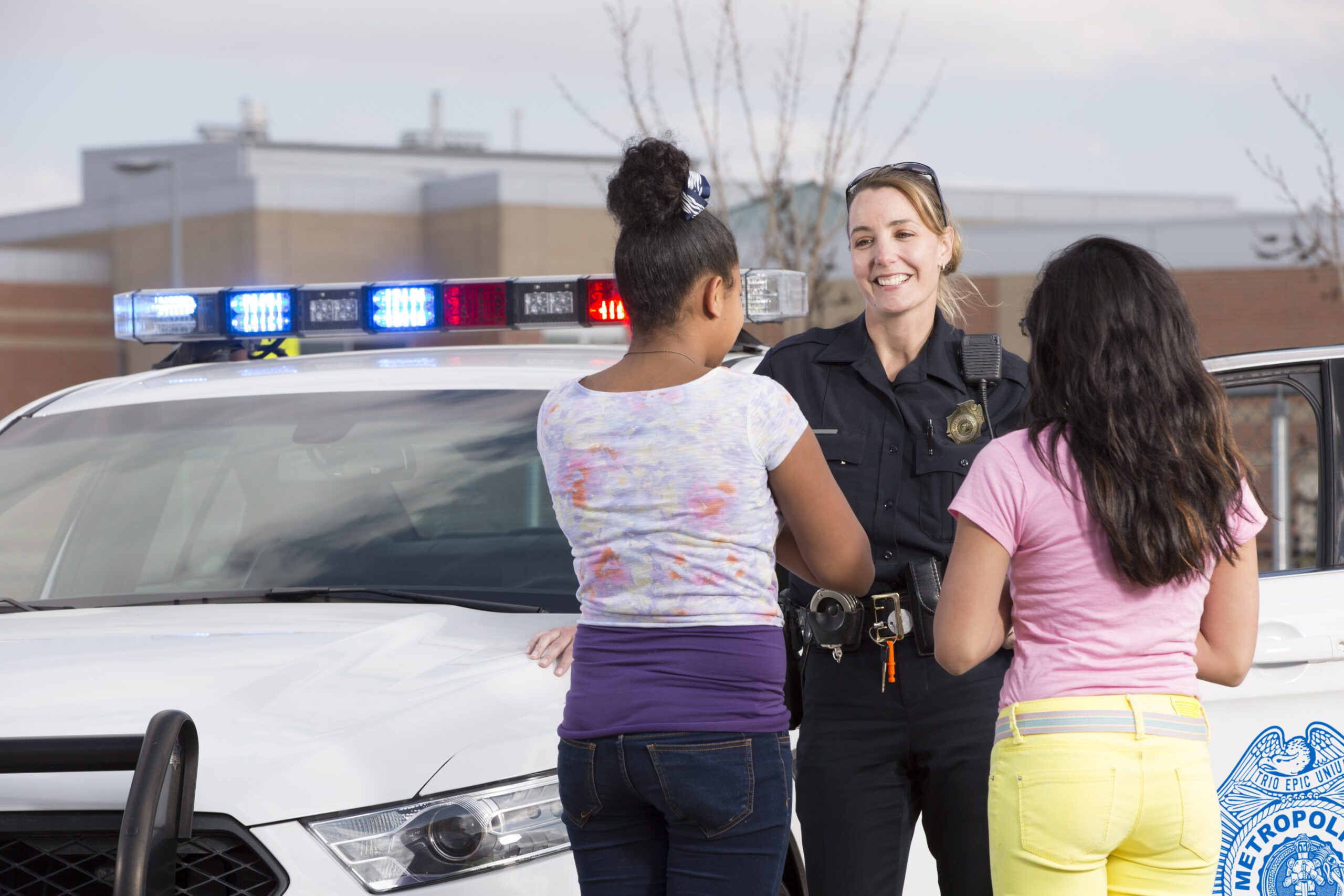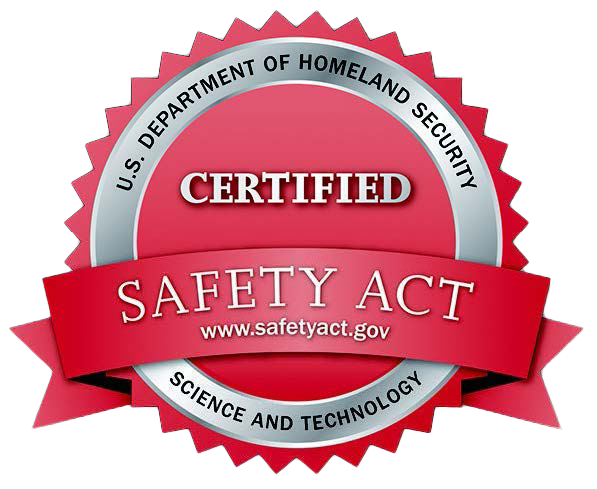Every child deserves their school to have the best technology available to keep them safe. This article reviews how to compare panic button applications and provides guidance for school safety officials.
By: Jeff Kelly, National Director Campus Safety K-12 and Higher Education
There is an urgent need for panic button systems for K-12 school security. There have been at least 23 shootings this school year as of Oct. 11, according to Education Week.
Federal and state governments recognize this need for school safety. That’s why many state agencies are working to adopt Alyssa’s Law or similar legislation that seeks to install silent panic alarms that send alerts to local law enforcement when there is an emergency.
The law has already been passed in Florida and New Jersey. It is under review in several other states and was recently introduced at the federal level.
Make Schools Safe
Alyssa’s Law is the result of efforts by Lori and Ilan Alhadeff, whose daughter Alyssa was killed in the 2018 Marjory Stoneman Douglas High School shooting in Parkland, Florida. The Alhadeffs started a nonprofit foundation in her honor, called Make Our Schools Safe. Their mission is to help create and maintain a secure school environment.
School safety and security is a complex challenge for school administrators. It is difficult to know where to start. First and foremost, training and preparation are key. 80 percent of schools have an emergency plan, but many do not exercise or prepare for the emergencies outlined in the plan. For example, active shooter drills help school ecosystems role play and understand what to do in these situations.
Next, schools should assess their physical security. The use of security equipment such as surveillance cameras and radio systems can help ensure that when an event occurs, there is context around the emergency and communication with local officials.
However, these technologies must be linked with an interoperability platform that facilitates real time unified communications and information sharing directly with emergency responders. In the Parkland shooting, for example, security cameras did not provide real-time video to the police. The feeds were on a 20-minute delay and created greater chaos and confusion, according to the local police chief.
To address the issue of expediting police response, the use of panic buttons by teachers and administrators can generate an immediate alert. A fully integrated panic button solution can be connected with physical security IoT devices, public safety radio systems, 911 centers, and district video management systems, allowing a robust information-sharing network to be formed instantly in an emergency. Armed with the right information, first responders can quickly understand the context of the incident and rapidly send the proper defenders.
Panic Button Solutions: What You Need to Know
Every child deserves to be protected by the best safety technology available.
Today there are dozens of panic buttons and active shooter alert apps on the market. Multiple vendors have rushed to deliver solutions, regardless of their lack of experience or knowledge of K-12 school safety and security systems. This is a danger to students, faculty, and staff, and can create significant problems for first responders. In one Arizona school, during an actual emergency, school officials were shocked to learn that their panic button wasn’t actually connected to anyone and was not programmed to call 911.
If a panic button doesn’t automate mutual aid channels that facilitate sharing of live video or direct 2-way communication with first responders’ radio systems, then police officers won’t know what sort of situation they’re dealing with. It could be a teacher having a heart attack, an active shooter situation, a natural disaster like an earthquake, or a student who has gone missing. In an emergency, you want to give first responders the most information you can in the shortest time possible. There is a small window that police have to save lives and it dwindles by the second.
If we rely on information coming in through 911 callers, there is often a delay and can be inaccurate. 911 centers quickly become overwhelmed with all of the information they have to sort through from 911 callers and responders on the scene. To get the most effective response, share information, pictures, and videos directly with those on the scene with a simple click of a button and save valuable time.
In addition, swift coordination between school officials and local responders expedites alerts to parents and the community. Parents may swarm the school, making it difficult for emergency medical professionals and police to adequately respond. Direct 2-way communication and coordination get ahead of misinformation and help keep families informed.
The Best Panic Button Applications
First responders, school and community officials require context and visibility into school safety incidents. They need a robust information-sharing solution and instant insight into what is happening. After all, when an active shooter alert app button is pressed, you need an instant notification for the fastest possible response to save children’s lives.
That’s why K-12 school security solutions should seek the right panic button technology. The solution should include seamless integration with disparate radio systems, video and voice communications systems. Also, it must address data privacy concerns.
The best solution allows communication systems and video cameras to be siloed until an emergency is declared. Then it should unite the community partners needed to resolve the situation and then disconnect protecting the privacy of teachers, students, and staff.
As you explore panic alert system solutions, the number one feature you should look for is the freedom to choose what technology you want to integrate including the panic button application. Freedom of choice allows the management and integration of existing compliant panic buttons and technologies. The application should consist of at least one button for high-level threats. But schools across the country are finding value in programming multiple buttons for different services: one large emergency button, multiple buttons for police, medical, fire, and maintenance, or program a lower-level response that includes only school administrators or community partners like crisis counselors or mental health specialists.
The ability to customize these buttons means school officials maintain control over who is included in an incident; external entities, internal departments, or internal departments only.
Checklist for Your School Safety Alert System
Learn more about 6 critical elements to protect your schools.
Three Critical Requirements
There are three critical requirements that the best panic button technologies will deliver to protect students and staff.
First, they need to provide a direct conduit to public safety. Ask many questions about what that conduit looks like. Some buttons only autodial 911 on your smartphone. Then you are in the queue with everyone else. That conduit should enable interoperability — or the ability to pull multiple agencies into talk groups — with the right resources to give first responders everything they need to take action.
Second, user experience is incredibly important. A panic button solution should be easy. Easy to navigate, easy to press even under duress and should provide a seamless communications experience with responders. One of the greatest challenges to panic button technology is ensuring that teachers, staff, and faculty actually adopt and use it. They may have concerns about data privacy (more on that next) or may worry about accidentally setting off an alert. However, the right panic button or active shooter alert app is easy to use and allays these concerns.
Third, any panic button technology must be dedicated to following local, state, and federal data protection laws. Mutualink does. For example, we comply with the Family Educational Rights and Privacy Act (FERPA), a federal law that protects student privacy and prohibits general access to monitoring school environments, except in emergency situations. Mutualink’s patented emergency incident-based, secure video sharing solution — which integrates many panic button apps — uniquely satisfies this requirement.
A Trusted School Safety Solution
Mutualink is the bridge that instantly connects panic button apps, radio, and video systems with community leaders and first responders for rapid response to emergencies such as active shooter incidents. Our solution pulls together all these technologies into one platform, so individuals only have one button to push.
We are happy to provide guidance and more information. Also, please check out our School Safety page.
